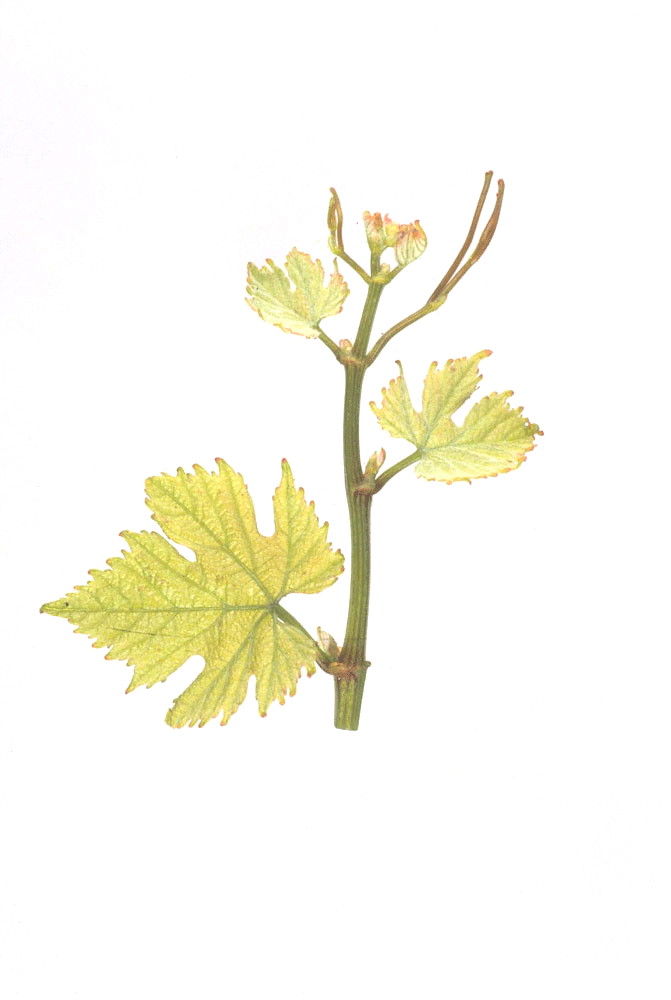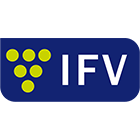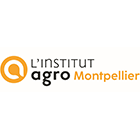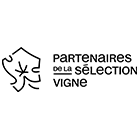Chardonnay
B
Wine grape variety.
The geographical origin of the variety is specified or, if this is not possible, the area in which it is traditionally cultivated. The genetic origin of the variety is also indicated whenever it is known from hybridiser data or from genetic analyses published or obtained by the teams at INRAE in Montpellier (UMR AGAP) and Vassal-Montpellier Grapevine Biological Resources Centre (CRB-Vigne).
This variety is originally from Bourgogne (Burgundy) and based on published genetic analyses, would result from the crossbreeding of Pinot and Gouais blanc.
This information indicates the normal and statutory use for the grapes.
Wine grape variety.
Name under which the variety is officially registered in the catalogue of grapevine varieties in France and under which it may be propagated and disseminated.
Chardonnay
Recognised alternative names that may be used to identify the propagation material of the variety in France or in other member countries of the European Union.
There is no officially recognized synonym in France nor in the other countries of the European Union, for this variety.
This information indicates on which list the variety is registered (A or B), whether it is classified for wine grapes, and in which member countries of the European Union the variety is also officially registered (for more information, see the "Legislation" menu.
In France, Chardonnay is officially listed in the "Catalogue of vine varieties" on the A list and classified. This variety is also listed in the catalogues of other Member States of the European Union: Austria, Belgium, Bulgaria, Cyprus, Czech Republic, Germany, Greece, Hungary, Italy, Luxembourg, Malta, Netherlands, Portugal, Romania, Slovakia, Slovenia, Spain and Sweden.
Evolution of cultivated areas in France
The figures provided are taken from vineyard land registers (IVCC, ONIVIT, ONIVINS), general agricultural censuses (SCEES-INSEE) and the current computerised vineyard register (DGDDI, FAM).
Regional vine planting data is available on the following site: https://visionet.franceagrimer.fr/Pages/DonneesInteractivesDocs.aspx?sousmenu=observatoire%20de%20la%20viticulture.
The figures provided are taken from vineyard land registers (IVCC, ONIVIT, ONIVINS), general agricultural censuses (SCEES-INSEE) and the current computerised vineyard register (DGDDI, FAM). Regional vine planting data is available on the following site: https://visionet.franceagrimer.fr/Pages/DonneesInteractivesDocs.aspx?sousmenu=observatoire%20de%20la%20viticulture.
Year |
ha |
|
|---|---|---|
|
1958 |
7325 |
|
|
1968 |
9805 |
|
|
1979 |
13042 |
|
|
1988 |
19869 |
|
|
1998 |
33070 |
|
|
2008 |
42017 |
|
|
2018 |
54993 |
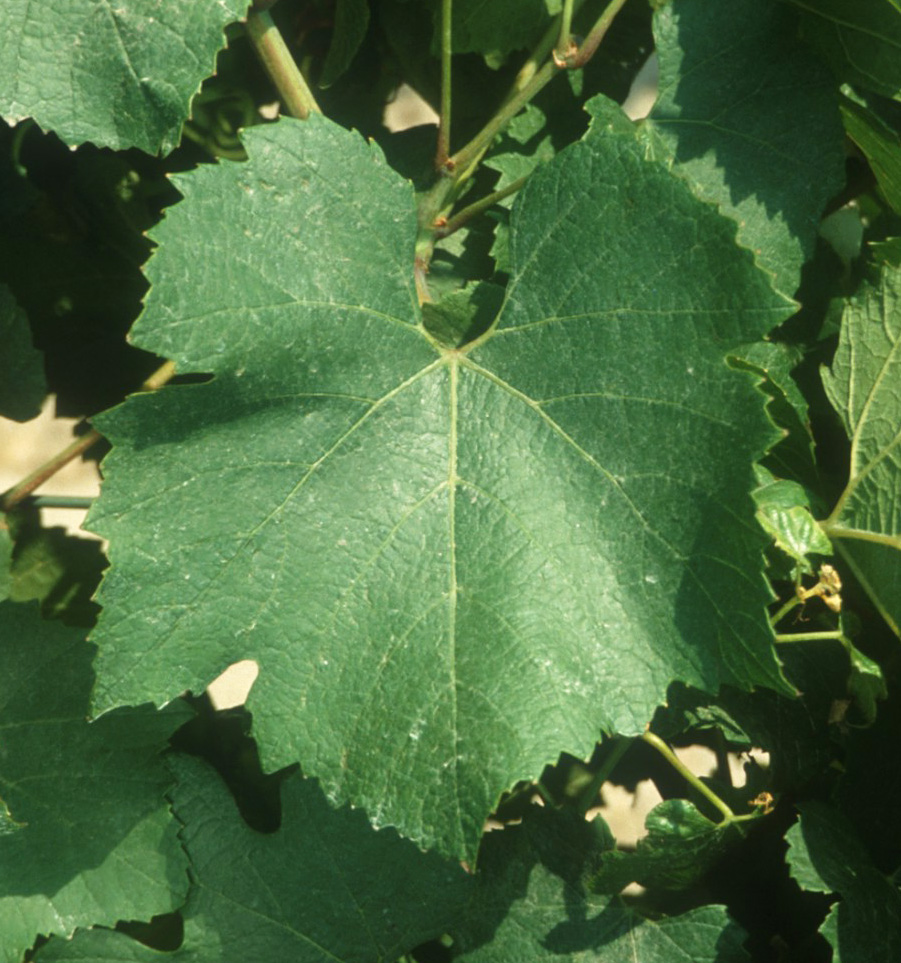
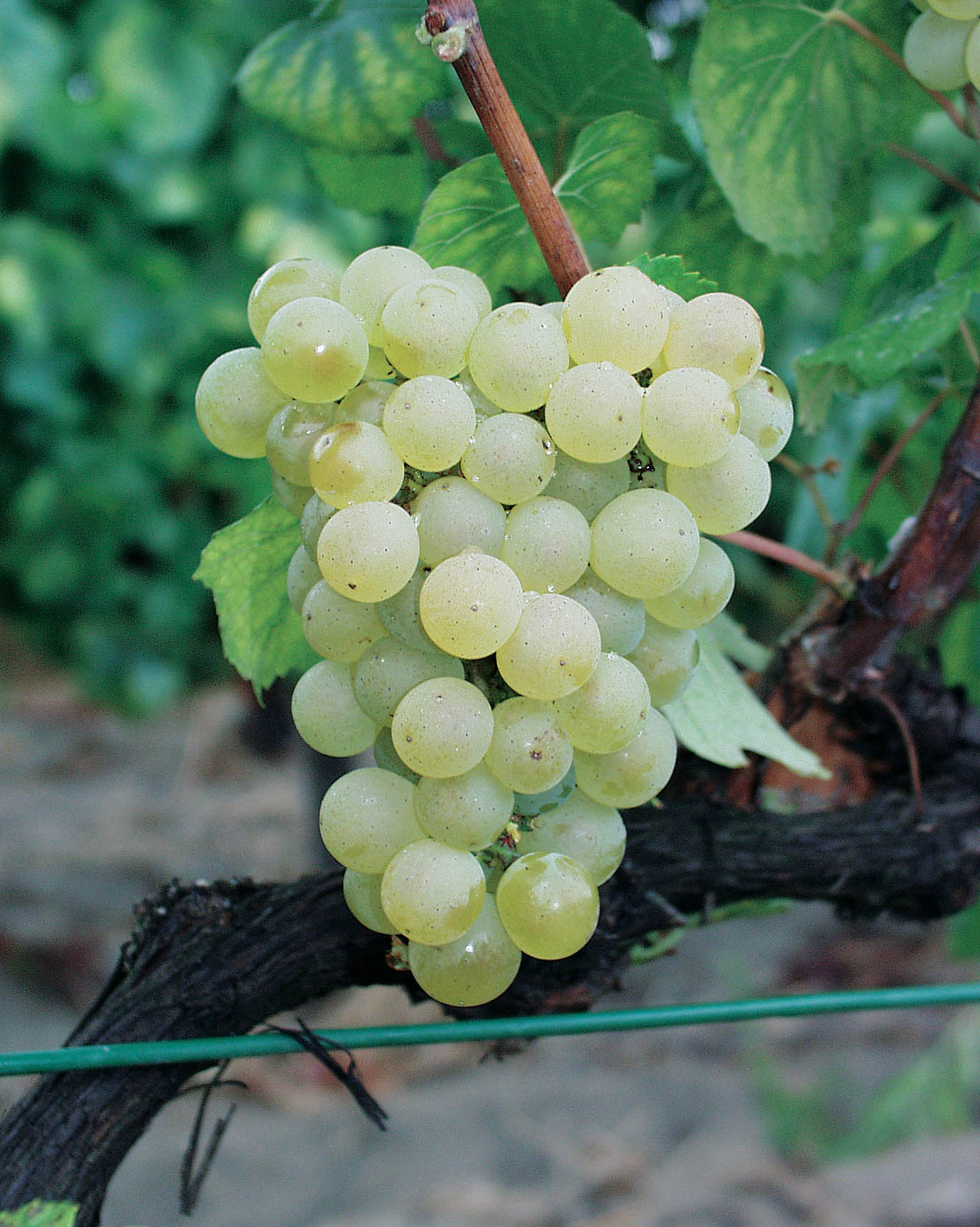
Only the principal ampelographic elements enabling the varieties to be characterised and identified are provided. They are presented according to the descriptor code recognised by the International Organisation of Vine and Wine (OIV), the International Union for the Protection of New Varieties of Plants (UPOV), the Community Plant Variety Office (OCVV) and Bioversity International (for more information, see the "Ampelographic glossary" menu). The photographs of leaves and grapes were taken in natural conditions, on the vine, in very similar situations in terms of growing conditions (sandy soil, Mediterranean coast): - Domaine de l'Espiguette (IFV), Le Grau du Roi (Gard), - Domaine de Vassal (INRAE), Marseillan (Hérault), - La Gaillarde Campus (Institut Agro | Montpellier SupAgro), Montpellier (Hérault). Only a few photographs, including the tips of bunches, were taken in other conditions.
- the tip of the young shoot with a low to medium density of prostrate hairs,
- the green young leaves with bronze spots,
- the shoots with red internodes,
- the circular adult leaves, entire or with five lobes, with a slightly open petiole sinus, often naked petiole veins, short teeth compared to their width with straight sides, a slightly blistered leaf blade, and on the lower side of the leaves, a low density of erect hairs,
- the round-shaped berries.
Genetic profile
The genetic profile of the variety is provided for the 9 microsatellite markers (or SSR markers) selected under the European programme GrapeGen06 (http://www.eu-vitis.de/index.php) and by the OIV. The absolute size values of the alleles may vary slightly from one laboratory to another, but the relative differences between the two alleles of one single microsatellite are constant. The genetic analyses were conducted by the INRAE Montpellier team (UMR AGAP) and the IFV’s Plant Material Centre.
| Microsatellite | VVS2 | VVMD5 | VVMD7 | VVMD27 | VRZAG62 | VRZAG79 | VVMD25 | VVMD28 | VVMD32 |
|---|---|---|---|---|---|---|---|---|---|
|
Allele 1 |
135 |
232 |
239 |
178 |
188 |
244 |
238 |
216 |
239 |
|
Allele 2 |
141 |
236 |
243 |
186 |
196 |
246 |
254 |
227 |
271 |
The data on suitability are the result of field observations or, if none are available, of bibliography mining and the study of bibliographic references.
Chardonnay is generally pruned long. However, in areas with favorable climatic conditions for floral initiation, vines may also be pruned short. This variety is suited to moderately fertile soils with dominant limestone or marly. In Mediterranean areas, intense drought situations are to be avoided.
These remarks are also the result of field observations or, if none are available, of bibliography mining and study of bibliographic references.
Chardonnay is susceptible to powdery mildew and strongly express grapevine yellows. At the end of its maturation and under strong vigor conditions, grey rot may cause significant damage.
The growth stages indicated are the result of obsrvations made at the Domaine de Vassal Estate where the set of these varieties form a collection. The results are indicated compared to the Chasselas vine variety as a reference in order to make comparisons between years and different sites. As such, for information purposes, the dates for the Chasselas B growth stage at Domaine de Vassal are as follows: - Bud burst, 21 March (average over 50 years) - Grape maturity, 14 August (average over 50 years)
Bud burst: 1 day before Chasselas.
Grape maturity: early-season, 1 week and a half after Chasselas.
The size of grape clusters and berries indicated are based on the following scales: - Wine grape varieties Size : Very small Bunch (g) : ≤ 100 Berry (g) : 1 - Table grape varieties Bunch (g) : 150 Berry (g) : 2 - Wine grape varieties Size : Small Bunch (g) : 100 - 200 Berry (g) : 1,5 - 2 - Table grape varieties Bunch (g) : 150 - 250 Berry (g) : 2 - 3,5 - Wine grape varieties Size : Moderate Bunch (g) : 200 - 250 Berry (g) : 2 - 2,5 - Table grape varieties Bunch (g) : 250 - 400 Berry (g) : 3,5 - 5,5 - Wine grape varieties Size : Large Bunch (g) : 250 - 400 Berry (g) : 2,5 - 3,5 - Table grape varieties Bunch (g) : 400 - 700 Berry (g) : 5,5 - 8 - Wine grape varieties Size : Very large Bunch (g) : 400 Berry (g) : 3,5 - Table grape varieties Bunch (g) : 700 Berry (g) : 8 Remarks concerning the characteristics of the wines are generally based on tastings organised by juries of professionals.
The bunches and berries are small. This variety has an extermely high quality potential and is used to produce dry white wines, sparkling wines and even liqueur wines. The sugar content of the berries can reach high levels while maintaining high acidity. This is what enables the production of particularly well balanced, powerful and ample wines (full-bodied and with volume). The typical aromas are complex and intense (dried fruit, hazel nut, grilled flavor, exotic fruit, butter, etc). Chardonnay is also suited to barrel fermentation and barrel ageing.
In this section, the list of certified clones is given. Information on clone conservatories is also provided.
The thirty-one certified Chardonnay clones carry the numbers 75, 76, 77, 78, 95, 96, 116, 117, 118, 119, 121, 122, 124, 125, 128, 130, 131, 132, 277, 352, 414, 415, 548, 549, 809, 1066, 1067, 1068, 1145, 1146 and 1147. A conservatory of more than 340 clones was planted in 1994 in the French department of Saône-et-Loire. An other conservatory of 53 clones was planted in the French department of Champagne in 2015.
Bibliography
- Catalogue des variétés et clones de vigne cultivés en France. Collectif, 2007, Ed. IFV, Le Grau-du-Roi, France.
- Documentary collections of the Centre de Ressources Biologiques de la Vigne de Vassal-Montpellier, INRAE - Institut Agro | Montpellier, Marseillan, France.
- Dictionnaire encyclopédique des cépages et de leurs synonymes. P. Galet, 2015, Ed. Libre&Solidaire, France.
- Traité général de viticulture, Ampélographie. P. Viala and V. Vermorel, 1901-1909, Ed. Masson, Paris, France.
Description of clones approved in France
In this section, the list of certified clones is given. Information on clone conservatories is also provided.
In this section, the list of certified clones is given. Information on clone conservatories is also provided.
-
Clone number
-
Brand
-
Origin
Region, department or winegrowing region in which the “clone mother plant” was identified and selected.
-
Selection
Body or bodies which selected the clone. In France, clonal selection is the responsibility of the selection organisations (themselves accredited by the ministry in charge of agriculture), usually in close collaboration with a technical partner working in a winegrowing region. For clones certified after 1999, the name of the partner or partners who took part in the selection work is also included. (NB: CA = Chamber of Agriculture).
-
Year of approval
Year in which the clone was certified by the FranceAgriMer board further to a proposal by the Vine section of the CTPS (Permanent Technical Committee for Plant Selection).
-
Agronomic Reference
Region, department or winegrowing region in which the agronomic and technological data were collected.
-
Surface in multiplication
Surface area in hectares (ha) of stock nurseries used for propagation for the year under consideration (in brackets), which allows the available potential to be evaluated. Clones with a surface area of between 0.01 and 0.10 ha are shown as <0.10 ha. Clones of limited dissemination, but for which we have technical data, are shown as <0.01 ha. Other clones are given as “low-dissemination clone”, which means that the clone has been certified only recently or has not been propagated. In both cases, only the initial material is planted in the selection centres.
-
 B
B -
75
-

-
Côte-d'Or
-
ENTAV
-
1971
-
Burgundy;
Champagne;
Languedoc -
4.10 ha
-
Agronomic Data
-
Fertility medium
-
Production level medium to high
-
Cluster weight medium
-
Technological Data
-
Sugar richness low to medium
-
Oenological skills balanced but neutral wines, diluted due to overproduction
-
Other information
-
General note uneven vigor and production according to regions. Manage the production for its use as still wines. It can also be used to produce sparkling wines.
-
 B
B -
76
-

-
Saône-et-Loire
-
ENTAV
-
1971
-
Burgundy;
Champagne;
Languedoc;
Loire-Valley -
16.18 ha
-
Agronomic Data
-
Fertility medium
-
Production level medium
-
Cluster weight low to medium
-
Vigor medium
-
Berry size low to medium
-
Technological Data
-
Sugar richness medium to high
-
Total acidity medium
-
Oenological skills fine, aromatic, balanced, typical wines
-
Other information
-
General note clone appreciated for its regularity of production, its agronomic characteristics and the quality of the wines obtained. It can also be used to produce sparkling wines.
-
 B
B -
77
-

-
Saône-et-Loire
-
ENTAV
-
1971
-
-
-
-
-
Other information
-
Agrotecnica note Clone not widely distributed.
-
 B
B -
78
-

-
Côte-d'Or
-
ENTAV
-
1971
-
Burgundy;
Champagne;
Loire-Valley -
4.44 ha
-
Agronomic Data
-
Fertility medium to high
-
Production level high
-
Cluster weight medium
-
Technological Data
-
Sugar richness low
-
Oenological skills not very expressive as a still wine
-
Other information
-
General note productive clone, suitable for the production of sparkling wines
-
 B
B -
95
-

-
Côte-d'Or
-
ENTAV
-
1971
-
Burgundy;
Champagne;
Languedoc -
12.59 ha
-
Agronomic Data
-
Fertility medium
-
Production level medium
-
Cluster weight low to medium
-
Vigor medium to high
-
Berry size low to medium
-
Technological Data
-
Sugar richness medium to high
-
Total acidity low to medium
-
Oenological skills fine aromas, a rich and balanced structure
-
Other information
-
General note clone appreciated for its regularity of production, its agronomic characteristics and the quality of the wines obtained. It can also be used to produce sparkling wines.
-
 B
B -
96
-

-
Côte-d'Or
-
ENTAV
-
1971
-
Burgundy;
Champagne;
Languedoc;
Loire-Valley -
28.30 ha
-
Agronomic Data
-
Fertility medium
-
Production level medium to high
-
Cluster weight high
-
Vigor high
-
Berry size medium
-
Technological Data
-
Sugar richness medium to high
-
Total acidity medium to high
-
Oenological skills lively wines
-
Other information
-
General note steady production, manage production for the production of still wines. It can also be used to make sparkling wines.
-
 B
B -
116
-

-
Côte-d'Or
-
ENTAV
-
1971
-
-
-
-
-
Other information
-
Agrotecnica note Clone not widely distributed.
-
 B
B -
117
-

-
Côte-d'Or
-
ENTAV
-
1971
-
-
-
-
-
Other information
-
Agrotecnica note Clone not widely distributed.
-
 B
B -
118
-

-
Côte-d'Or
-
INRA
-
1971
-
Burgundy;
Champagne -
2.19 ha
-
Agronomic Data
-
Fertility high
-
Production level high
-
Cluster weight medium
-
Technological Data
-
Sugar richness medium
-
Oenological skills representative wines of the variety
-
Other information
-
General note clone suitable for the production of sparkling wines
-
 B
B -
119
-

-
Côte-d'Or
-
INRA
-
1971
-
Burgundy
-
0.94 ha
-
Agronomic Data
-
Fertility medium to high
-
Production level medium to high
-
Cluster weight medium
-
Technological Data
-
Sugar richness low to medium
-
Oenological skills representative wines of the variety
-
 B
B -
121
-

-
Côte-d'Or
-
INRA
-
1971
-
Burgundy;
Champagne -
3.42 ha
-
Agronomic Data
-
Fertility medium
-
Production level medium
-
Cluster weight medium to high
-
Vigor medium
-
Berry size medium
-
Technological Data
-
Sugar richness medium
-
Total acidity medium
-
Oenological skills aromatic, fine, typical and balanced wines
-
Other information
-
General note clone appreciated for its agronomic characteristics and the quality of the wines obtained. It can also be used to produce sparkling wines.
-
 B
B -
122
-

-
Côte-d'Or
-
INRA
-
1971
-
Burgundy;
Languedoc -
0.56 ha
-
Agronomic Data
-
Fertility medium
-
Production level medium to high
-
Cluster weight high
-
Technological Data
-
Sugar richness medium
-
Oenological skills representative wines of the variety
-
Other information
-
General note clone suitable for the production of sparkling wines
-
 B
B -
124
-

-
Côte-d'Or
-
INRA
-
1971
-
Burgundy;
Champagne -
5.82 ha
-
Agronomic Data
-
Fertility high
-
Production level high
-
Cluster weight medium to high
-
Vigor medium to high
-
Technological Data
-
Sugar richness low to medium
-
Total acidity medium
-
Oenological skills lively wines
-
Other information
-
General note manage the production for its use in still wines. It can also be used to make sparkling wines.
-
 B
B -
125
-

-
Côte-d'Or
-
INRA
-
1971
-
Burgundy
-
-
-
Agronomic Data
-
Fertility high
-
Production level high
-
Cluster weight medium
-
Technological Data
-
Sugar richness medium
-
Oenological skills representative wines of the variety
-
 B
B -
128
-

-
Côte-d'Or
-
INRA
-
1971
-
Burgundy
-
0.42 ha
-
Agronomic Data
-
Fertility medium to high
-
Production level medium to high
-
Cluster weight medium to high
-
Technological Data
-
Sugar richness medium to high
-
Oenological skills representative wines of the variety
-
 B
B -
130
-

-
Côte-d'Or
-
INRA
-
1971
-
Burgundy;
Champagne;
Languedoc -
4.09 ha
-
Agronomic Data
-
Fertility medium to high
-
Production level medium to high
-
Cluster weight medium
-
Technological Data
-
Sugar richness medium
-
Oenological skills representative wines of the variety
-
Other information
-
General note clone suitable for the production of sparkling wines
-
 B
B -
131
-

-
Côte-d'Or
-
INRA
-
1971
-
Burgundy;
Champagne -
4.02 ha
-
Agronomic Data
-
Fertility medium
-
Production level medium to high
-
Cluster weight medium to high
-
Vigor medium
-
Berry size low to medium
-
Technological Data
-
Sugar richness medium to high
-
Total acidity medium
-
Oenological skills lively wines
-
Other information
-
General note manage the production for its use in still wines. It can also be used to make sparkling wines.
-
 B
B -
132
-

-
Côte-d'Or
-
INRA
-
1971
-
Burgundy;
Champagne -
3.34 ha
-
Agronomic Data
-
Fertility high
-
Production level high
-
Cluster weight high
-
Technological Data
-
Sugar richness low to medium
-
Oenological skills representative wines of the variety
-
Other information
-
General note clone suitable for the production of sparkling wines
-
 B
B -
277
-

-
Côte-d'Or
-
ENTAV
-
1973
-
Burgundy;
Loire-Valley -
9.21 ha
-
Agronomic Data
-
Fertility high
-
Production level medium to high
-
Cluster weight medium to high
-
Vigor medium to high
-
Berry size low to medium
-
Technological Data
-
Sugar richness medium
-
Total acidity medium
-
Oenological skills balanced wines with mineral aromas
-
Other information
-
General note irregular vigor and production that must be managed in order to obtain sufficient quality.
-
 B
B -
352
-

-
Côte-d'Or
-
ENTAV
-
1975
-
-
-
-
-
Other information
-
Agrotecnica note Clone not widely distributed.
-
 B
B -
414
-

-
Côte-d'Or
-
ENTAV
-
1976
-
-
-
-
-
Other information
-
Agrotecnica note Clone not widely distributed.
-
 B
B -
415
-

-
Côte-d'Or
-
ENTAV
-
1976
-
-
-
-
-
Other information
-
Agrotecnica note Clone not widely distributed.
-
 B
B -
548
-

-
Saône-et-Loire
-
ENTAV
-
1978
-
Burgundy
-
6.06 ha
-
Agronomic Data
-
Fertility medium
-
Production level low
-
Cluster weight low
-
Vigor medium
-
Berry size medium
-
Technological Data
-
Sugar richness high
-
Total acidity medium to high
-
Oenological skills concentrated, balanced wines with complex aromas
-
Other information
-
General note earlier clone, appreciated for its agronomic characteristics and the quality of the wines obtained.
-
 B
B -
549
-

-
Non précisée
-
ENTAV
-
1978
-
Burgundy
-
0.10 ha
-
Agronomic Data
-
Fertility medium
-
Production level medium
-
Cluster weight low to medium
-
Technological Data
-
Sugar richness medium
-
Oenological skills representative wines of the variety
-
 B
B -
809
-

-
Saône-et-Loire
-
ENTAV
-
1985
-
Burgundy
-
1.98 ha
-
Agronomic Data
-
Fertility medium
-
Production level low to medium
-
Cluster weight low
-
Vigor medium
-
Berry size low to medium
-
Technological Data
-
Sugar richness high
-
Total acidity high
-
Oenological skills muscaté, fine and balanced wines
-
Other information
-
General note clone appreciated for its agronomic characteristics and the quality of the wines obtained. To be used with care according to the muscat character desired.
-
 B
B -
1066
-

-
Côte-d'Or
-
ATVB - ENTAV
-
2003
-
Burgundy
-
-
-
Agronomic Data
-
Fertility low to medium
-
Production level very low
-
Cluster weight very low
-
Berry size low to medium
-
Technological Data
-
Sugar richness high
-
Total acidity low to medium
-
Oenological skills fine, typical, aromatic and well-structured wines
-
Other information
-
General note small bunches with a lot of millerandage. Earlier clone, appreciated for its low production level, its higher sugar content and the quality of the wines obtained. To be used in blending and for high added value productions because of its low yield.
-
 B
B -
1067
-

-
Côte-d'Or
-
ATVB - ENTAV
-
2003
-
Burgundy
-
-
-
Agronomic Data
-
Fertility low
-
Production level low
-
Cluster weight low to medium
-
Berry size medium
-
Technological Data
-
Sugar richness high
-
Total acidity medium
-
Oenological skills concentrated and balanced wines with complex aromas
-
Other information
-
General note earlier clone, appreciated for its agronomic characteristics and the quality of the wines obtained.
-
 B
B -
1068
-

-
Côte-d'Or
-
ATVB - ENTAV
-
2003
-
Burgundy
-
-
-
Agronomic Data
-
Fertility low to medium
-
Production level low to medium
-
Cluster weight low to medium
-
Berry size medium
-
Technological Data
-
Sugar richness high
-
Total acidity medium
-
Oenological skills muscaté aromas (more subtle following MLF), fine, a balanced structure
-
Other information
-
General note clone appreciated for its agronomic characteristics and the quality of the wines obtained
-
 B
B -
1145
-

-
Saône-et-Loire
-
CA71 - IFV
-
2010
-
Burgundy
-
-
-
Agronomic Data
-
Fertility medium
-
Production level low to medium
-
Cluster weight low to medium
-
Berry size low to medium
-
Susceptibility to Botrytis medium
-
Technological Data
-
Sugar richness high
-
Total acidity low
-
Aromatic intensity medium to high
-
Oenological skills balanced wines with pronounced muscaté aromas
-
Other information
-
Agronomic note Clone appreciated for its agronomic characteristics and the quality of the wines obtained.
-
 B
B -
1146
-

-
Saône-et-Loire
-
CA71 - IFV
-
2010
-
Burgundy
-
-
-
Agronomic Data
-
Fertility medium to high
-
Production level low
-
Cluster weight low
-
Berry size low
-
Susceptibility to Botrytis medium
-
Technological Data
-
Sugar richness high
-
Total acidity low to medium
-
Aromatic intensity high
-
Oenological skills balanced wines with pronounced muscaté aromas
-
Other information
-
Agronomic note Moderate level of production and wines appreciated for their organoleptic characteristics. A little susceptible to millerandage.
-
 B
B -
1147
-

-
Saône-et-Loire
-
CA71 - IFV
-
2010
-
Burgundy
-
-
-
Agronomic Data
-
Fertility medium
-
Production level low to medium
-
Cluster weight low to medium
-
Berry size low to medium
-
Susceptibility to Botrytis low to medium
-
Technological Data
-
Sugar richness high
-
Total acidity medium
-
Aromatic intensity medium
-
Oenological skills concentrated and well-balanced wines
-
Other information
-
Agronomic note Clone appreciated for its agronomic characteristics and the quality of the wines obtained. A little susceptible to millerandage.
